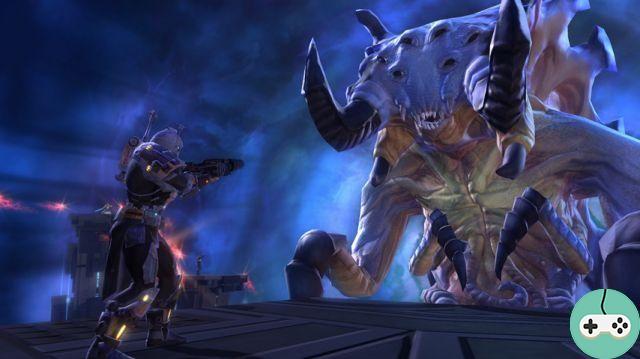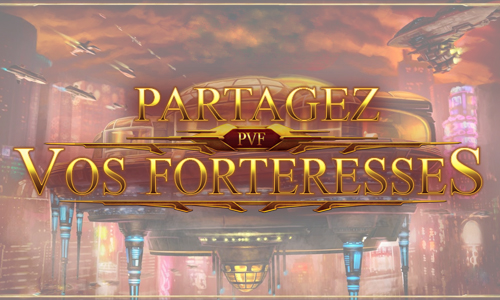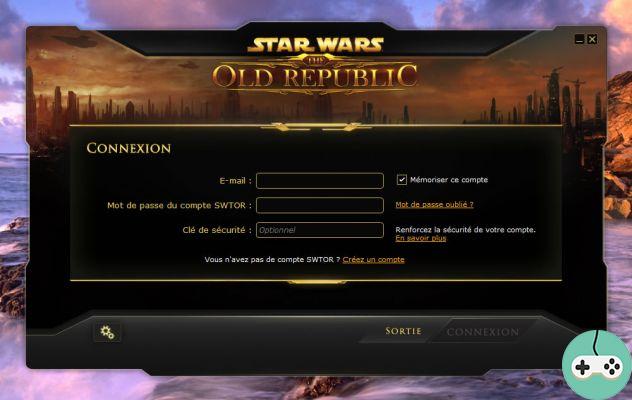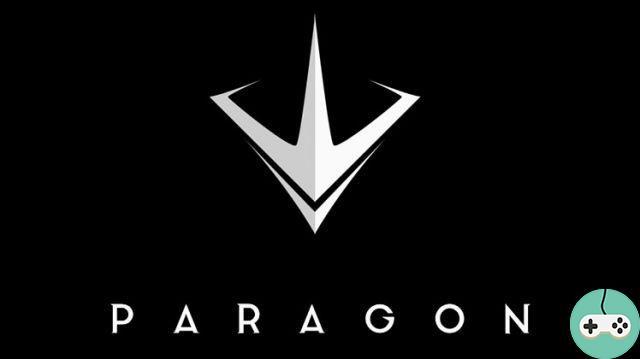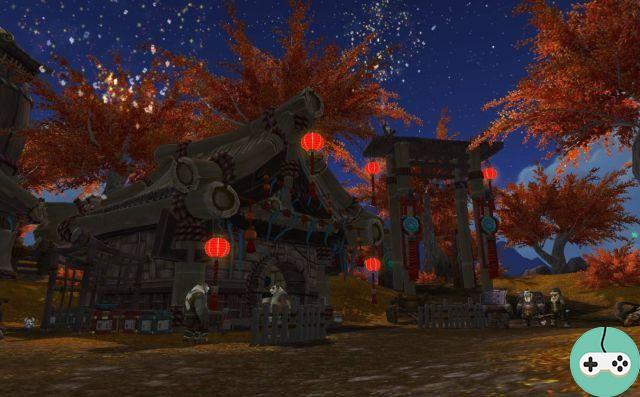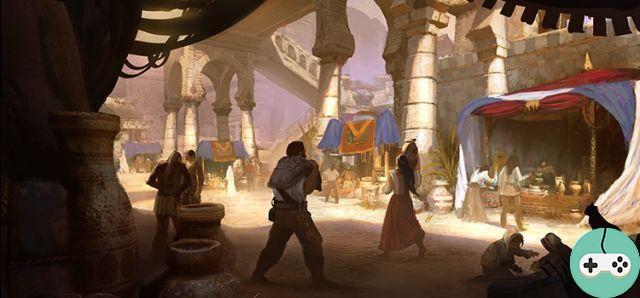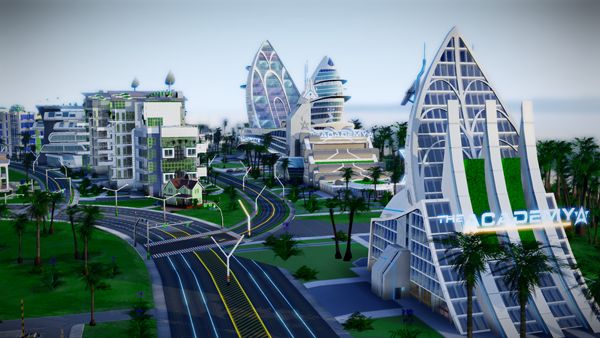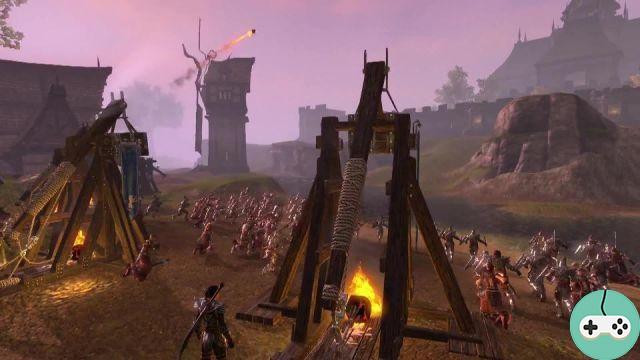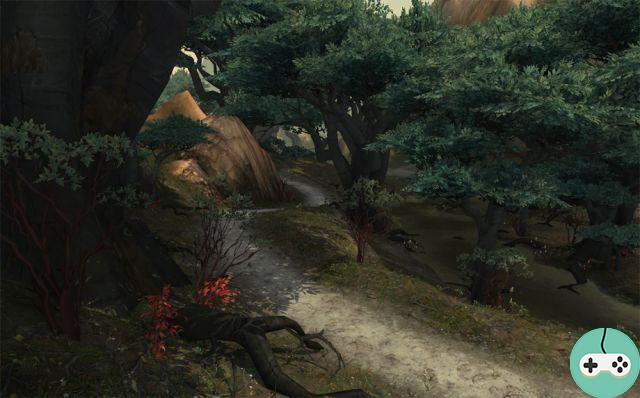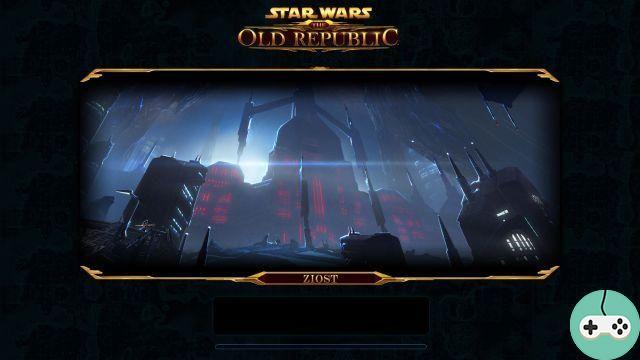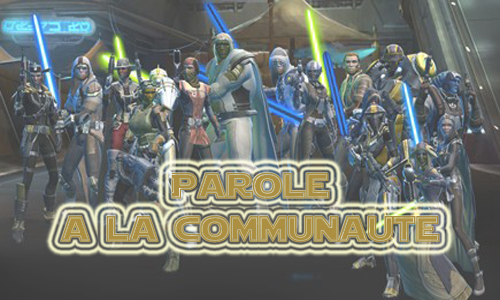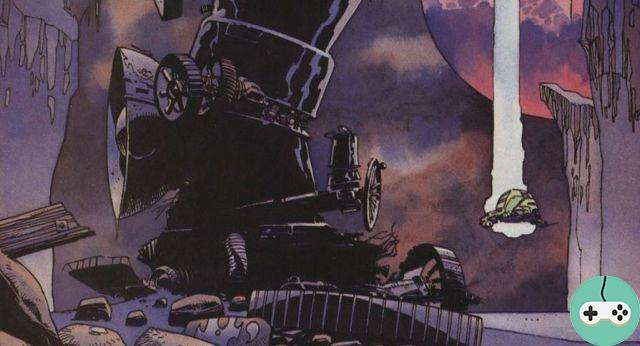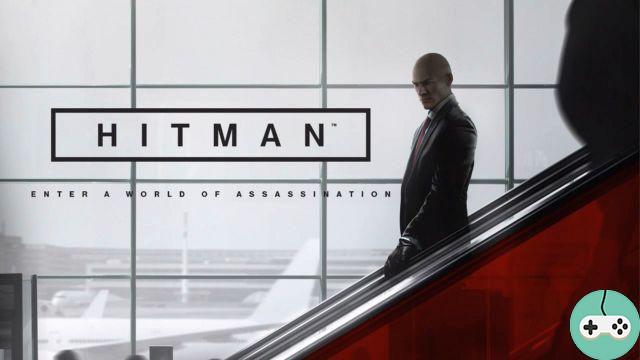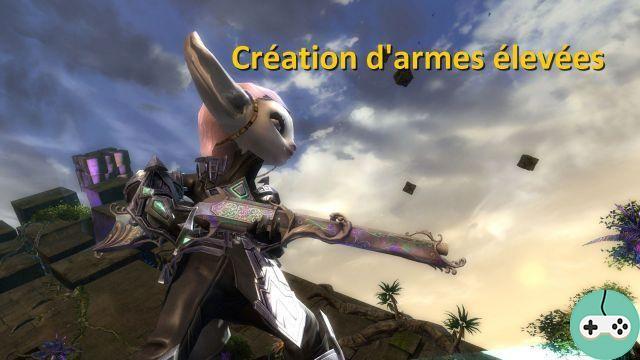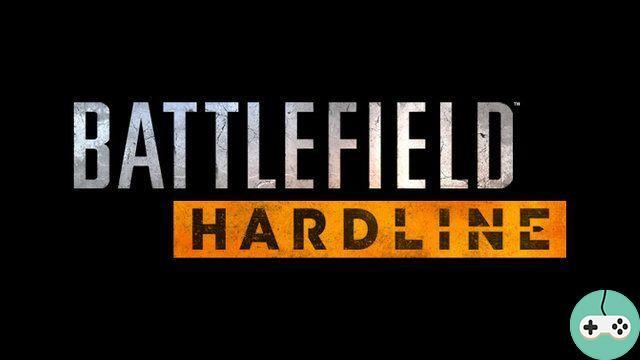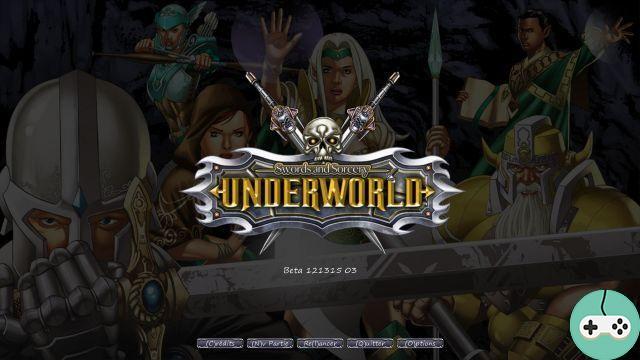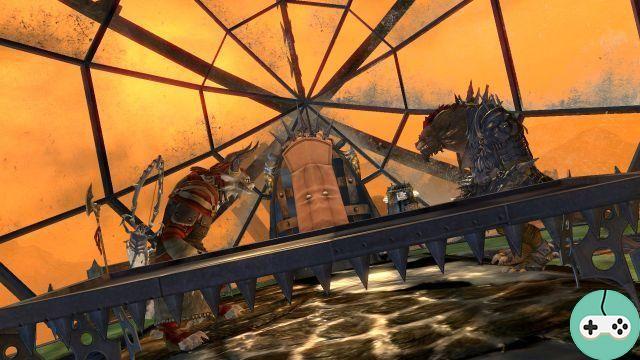
Rappel
The activities in Star Citizen are not going to be like what you find in most games today. You won't have to press a button and wait for it to happen or repeat an action over and over again without reason until you get what you want. There is also no choice of profession based on an artificial and statistical progression which increases little by little.
The goal of teams is to keep the player active by requiring reflection and dexterity to complete a task. Likewise, progression will only be achieved through the player's understanding of what he is doing and his acquired know-how.
All activities are concerned by this process, whether it is mining or going through a jump point. Some activities can be automated, but the result will be less interesting than if you do it yourself.

Context
Mining presents players with a lot of dangerous situations, without basically a fight occurring. Pockets of compact gas, explosive substance subjected to an excess of energy or others with an excess of vibrations bring their share of risks. In addition, the rarest minerals are often found in places that are difficult to access. Added to this that unaccompanied minors represent an interesting source of income for unscrupulous individuals. You will easily understand that it is a profession that rhymes with adventure.
There are several tasks to accomplish in order to just mine and on larger ships each task will keep an operator busy all the time.

Tasks
In order to present the mining activity, we will study the case of a multi-player vessel which pushes each task to have a dedicated operator like on the Orion.
The pilot
Of course, he runs the ship. While this sounds simple, in practice it is often difficult since hitting an asteroid can severely damage a player's ship and the asteroids with the most attractive resources are often buried deep in a fairly dense field. The pilots have the final say on which asteroid to prioritize, choosing from a list of possible targets established after a scan of the surrounding area. They also determine whether to remain hovering around an asteroid while excavation proceeds, or whether to adopt a more active stance, gradually circling around a specific asteroid in order to give the l radius operator the ability to more easily find and extract deep buried mineral deposits. Many asteroids are filled with hazardous materials which under certain conditions can shatter the asteroid into pieces, making it even more important to have a good pilot who can quickly move the ship a safe distance away. in case of emergency.
The analysis operator
He is responsible for inserting Remote Material Analysis Packages (RMAPs) into surrounding asteroids which, if successful, immediately send telemetry data to the pilot and the analysis operator, then informing them about the precise composition of the asteroid. Depending on the nature of the vessel and its components, the cargo can vary from a few dozen to several hundred RMAP-equipped unmanned missiles aboard a mining vessel.
During the selection of an asteroid, the center of mass is automatically calculated and the analysis operator begins by gradually studying it to find a suitable RMAP insertion point. This is a multifaceted task that involves finding a section of the surface geometry oriented such that probes cross it perpendicularly to or near the center of mass. The operator receives information about the angular difference, but ultimately it is up to him to decide whether a given site is viable or not.
Once the insertion site has been chosen, the optimal insertion location and orientation are displayed on the screen, and the analysis operator can launch a missile equipped with RMAP. The missile's guidance and propulsion systems are controlled manually, in order to strike the asteroid precisely and in the exact orientation indicated in the previous steps. The distance from the insertion position calculated by the computer, the deviation from the optimal angle, the asteroid base material and the final impact velocity determine the outcome of the insertion.
An interesting aspect of this particular task is the confidence of the analysis operator, which plays an important role. The more optimal the initial insertion point selected - which takes a certain amount of time to master - the more the error made during the guidance of the missile will be important, despite the success of the insertion. This is why, the most skilled operators, will preferentially accept a mediocre insertion site so as to be able to move quickly to the next excavation, confident in their ability to touch the precise place at the exact angle and speed in order to to be able to succeed.
The department operator
He is typically the second in command of any mining expedition. He is responsible for handling the multi-megawatt blasting radius generators attached to one or more robotic arms near the ship that fractures the asteroids into smaller, more digestible patches. The beam operator directly controls variations in electrical power and is, therefore, able to precisely control the amount of energy to be expended on a given area of an asteroid. This is vitally important work, since adding excess energy to the middle of an explosive substance can lead to chain explosions, the total force of which will be determined by the type of substance and its amount. The weapon, equivalent to a mass and producing a ray, can therefore be used to quickly extract large quantities of inert material, but a blade of lower electric power may be required in an attempt to carefully extract material that could react violently in the presence of sufficiently high energy.
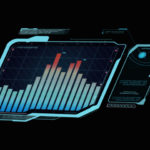
The exothermic reaction detector is an application displayed on the beam operator's control panel, which detects excessive energy production indicating that the mining beam is causing a reaction in a section of material near it. The information is presented to the operator in the form of a vertical bar graph, plotted over time, which shows the risk of such a reaction occurring every second and consuming - often in an explosion of energy projecting large and dangerous fragments of asteroids scattering towards the player's ship - all matter nearby.
Each shabby substance has its own parameters that determine how much energy it can absorb, how quickly it can dissipate energy, how easily it can transfer excess energy to surrounding matter, risk that it becomes fragmented as the energy reaches critical levels and a lot of other things.
The average size of the fragments detached from an asteroid following the use of the blasting ray, then depend on the intensity of the electric power that the ray applies in the body, but also on the type of material towards which the energy is directed.
As the fragments separate from the main body, they generate seismic vibrations that resonate through the asteroid and only gradually dissipate. Some explosive substances are sensitive to such vibrations, therefore it is very important to minimize the magnitude of these disturbances. This is a difficult task, because such vibrations are modeled independently of each other and the total sum of the displacement vectors results from the superposition of waves constantly applied against the different materials in the asteroid. Therefore, even a series of small vibrations can pose a serious threat, depending on how these waves interfere with each other.
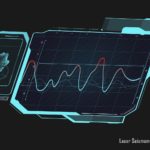
The laser seismometer shows each individual vibration in an asteroid, but also the superposition of different waves. It also shows the vibration threshold of each material, with its own sensitivity, in an asteroid, assuming that an RMAP has been successfully inserted. Explosions that occur as a result of a seismic phenomenon are often much more dangerous than a chain reaction that consumes a certain amount of material in a given area, as they will cause such substances to explode throughout the asteroid, often resulting in the complete destruction of the asteroid and certain danger to any mining vessel unlucky enough to be nearby at this time. Fortunately, such events are often detected in advance thanks to the seismic activity becoming more and more irregular, as well as small deposits of resources exploding prematurely and causing the ejection of small sections of the asteroid into it. space.
Pockets of highly compressed gas, buried in an asteroid, present another type of danger during a mining operation. Exposing even a small pocket of gas to space vacuum causes immediate explosive decompression that can shatter portions around the asteroid, project astronauts into space and generate considerable seismic turbulence.
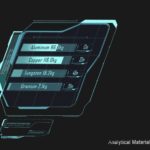
The material analysis processor is mounted on the blasting radius, and provides continuous information regarding the nature of the material lying beneath the surface - within range of the probe - in the specified direction. Each identified material is presented on a solid horizontal bar graph, which indicates how deep the material can be found and in what approximate quantity.
The hold operator
He uses a console on the ship's deck that gives him control of a camera, mounted on the forward-facing entry port. From this advantageous position, the bunker operator can observe the impact zone of the blasting ray, but also the various asteroid fragments which detach from the main body and which are ejected into space. The port of entry houses a powerful crusher that quickly reduces any fragments of an approaching asteroid to rubble and stores them in bunker modules for transport, or on ships equipped with a refinery, subsequent processing in their purification into more basic elements.
The cargo hold operator directs an aiming reticle at the fragments of interest, using an integrated fragment analyzer - similar to the materials analysis processor used by the beam operator - providing instant information about the precise composition of the fragment. This way the operator can get an idea of the approximate value of the fragment and whether it is worth the cost of being guided to the port of entry, or whether it contains so little valuable material. it is best to avoid it to save valuable storage space or time consuming refining. The fragment analyzer also displays the object's mass, path, and speed.
The cargo hold operator controls the generators of the attraction and repulsion rays, obviously mounted inside and outside the entry port, and the amplitude of the force generated by each of these generators can be precisely controlled to allow for complex manipulations and to control the trajectory of the fragment. The cargo hold operator's screen offers different image magnifications, essential since the forces of attraction and repulsion are applied at the precise location indicated by the aiming reticle. Applying a force to the end of a fragment will then naturally cause the object to rotate rather than change direction. Therefore, significant skill is required - such as being able to quickly estimate the approximate center of mass of an object - in order to effectively apply forces to the fragments and guide them in the desired path.
The refinery operator
It only exists on mining ships that have a built-in refinery. These refineries allow the crude ores to be gradually converted to their purified equivalent, expelling unwanted elements into space in the form of dust. Purified materials consume a small fraction of the storage space occupied by their unpurified counterparts, which is of some importance when dealing with low-quality asteroid fields that contain valuable elements. at low concentrations, or when trying to reduce the number of return trips to a warehouse. The refinery operator controls the path of the ores to various specialized processing units, each having a role to play in separating the materials from each other. Operator error during the refining process can cause equipment to fail which is sensitive, interrupting the conversion process and costing valuable time until the affected part is replaced, for example with an additional copy stored in the ship's inventory.
All of the aforementioned specialist positions can be held by either a player or an NPC, and the more skilled NPCs will perform their jobs more flawlessly, for a higher monthly salary.

Resource management
Independent or mandated minor
When the time for choices arrives, each minor has two options: to work for his own account or to be employed as an agent in the service of another entity. Independent miners choose what materials they want to source and after mining they set out to find the optimal trading station to unload them. Although this is potentially the most lucrative approach, it exposes miners to the vagaries of the market, and if demand collapses during the acquisition of materials, the resulting wage may possibly be insufficient for the effort and expense. expenses incurred, especially if those expenses are caused by expensive NPC crew members, fuel consumed, or damage the ship has taken.
Miners who work for other entities remove most of the risk from their sales records, but they have to give up a significant portion of the value of their cargo, in exchange for the benefit of having a fixed price. In addition, their reputation is likely to take a hit if they are not able to obtain the promised materials within the specified time frame. The information obtained from TDD is of crucial help in determining whether the reductions are profitable compared to the security of a guaranteed contract.
Trade and Development Division
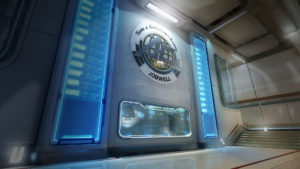
A visit to the local Trade and Development Division (TDD) office is often the first step on any good miner's list. TDD acts as a market for food and other local products, it allows you to get a good idea of what is sought and especially to know the interesting products allowing you to have a better profitability.
Excavation Locations
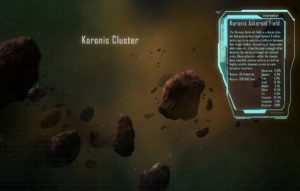
Once the route of the mining operation - on their own or mandated - is defined, the player will have to think about how to collect the desired materials. Asteroid fields containing more or less pure ores dot most solar systems, but before miners launch a quantum leap and rush to the riches the environment offers, they must learn about these fields.
To this end, each solar system contains a flood of information accessible to all, including the location of major asteroid fields. Novice miners usually start their careers at these sites, but as you would expect, the most important minerals have been mined for a long time. The remaining deposits are often scattered around these huge asteroid fields, so the time and effort required to find them is a waste of time for experienced miners. From time to time, new interesting fields are discovered and announced to the general public, often resulting in a significant increase in mining activity…. followed shortly after by a drop in the prices of precious minerals trapped in the field as players rush to exploit these new resources.
At the same time, minors can choose to use the services of an information reseller who, for a certain price, will offer the locations of a multitude of small fields unknown to the public. The most reputable brokers will reliably report the type and amount of minerals available in a specific field, but some will exaggerate the resources trapped in the field they seek to sell.
The last and most time-consuming option - which may however prove to be the most lucrative for those able to master another discipline - to find a workable asteroid field, is to simply act as a pioneer and find the field yourself. -even. The pioneer specializes in the use of long-range scanners and rangefinder probes allowing him to scan large expanses of space in order to discover anomalies, which sometimes leads to a small asteroid field with a combination of minerals precious. When you act on your own account - and not as an employee mandated by another entity - you are the only one with knowledge of this discovery. In this case, you can choose to resell this information to a broker - at a price set according to the type and quantity of materials present in the field and the prevailing market prices - who will take care of reselling it to others.
The latter option - discover your own asteroid field - presents a variation that we hope will be widely used. Organizations can automatically share their findings, such as asteroid fields, a salvageable ship wreck, or astronomical phenomena that can be studied by a future scientist - the location will then be known to all members of that organization but would remain unknown to the rest of the public. In addition, we hope that many organizations will have a large number of specialized and complementary professions in their ranks, thus allowing them to reduce the number of intermediaries in many expensive transactions and save more credits for their development and their members.
Sell your merchandise
The final step in the mining process is converting your carefully collected ores or refined materials into silver to reward your efforts.
If you have accepted a job, you will need to return to the agent who hired you to complete the transaction, which will result in the pledged amount being transferred to your account and an increase in your reputation for completing the assignment. with success. The agent will only purchase the specific type and desired amount of material that you have agreed to deliver, however, so you will likely want to go to the local TDD office to convert the excess into credits.
For players who have chosen to become independent minors, the path is often a little less obvious. With the many TDD offices in different landing zones usually offering drastically different prices, you will often need to be diligent in making sure you don't throw the money out the window by accepting the zone's offer too quickly. nearest landing site. The best deals are often made by mining worthless ore in one star system and then channeling it into another system where it is rarer and the purchase prices are higher. It's up to you to choose whether you only want to work as a miner or if you want the double hat of also being a freight transporter that carries its precious cargo across the galaxy, and the risks of the trade - the closer you get. an area where your cargo is expensive, the more you will become a prime target - are justified by a higher salary.
The last option, which some miners might undertake is questionable. If you like to gamble, some landing zones offer storage facilities that you can rent on a monthly basis. Rather than selling your cargo immediately, you can keep it aside, in the hope or expectation - perhaps planning actions with the help of your organization - that prices will rise significantly in the near future.






